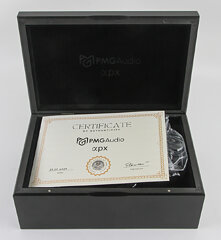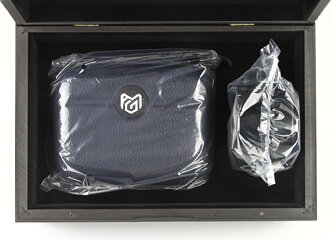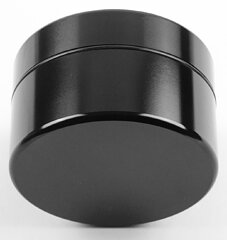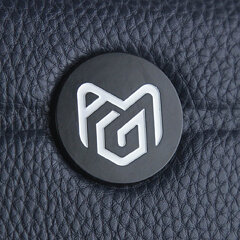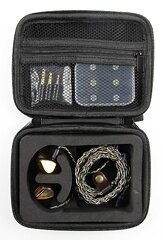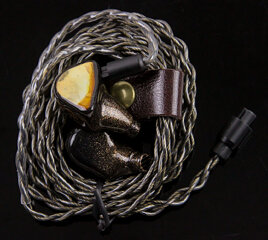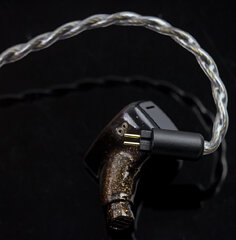 0
0
PMG Audio Apx In-Ear Monitors Review - $6500 Flagship!
Introduction

If you were to ask me just a couple of years ago what the most expensive product I would review here would be, chances are high I would not be saying earphones. After all, the very first set of in-ear monitors I reviewed cost $200 at the time and there has been an ongoing race to the bottom of the price barrel with budget IEMs in the $15-30 range having balanced tuning out of the box. Yet the high-end IEM market has been marching relentlessly at the same time. New driver technologies have come out, different materials have been incorporated, advanced electrical engineering has been applied, and expensive R&D + testing facilities have been purchased to come up with IEMs which aim to rival the sound signature of very expensive speaker systems in a well-treated room. Soundstage aside, flagship IEMs these days have indeed been the preferred personal audio solution for many people around the world who can't be bothered with heavy and bulky desktop gear which can't easily travel with you. There are multiple IEMs which cost over $10,000 as of the date I write this, and many, many sets which are more expensive than the subject of this review to where, while you and many others may be shocked to know earphones can cost this much, the flagship IEM market continues to thrive and even increase its market share over time.

Those who have read my IEM reviews would be familiar with Poland-based Custom Art which impressed with the excellent FIBAE 7 Unlimited in its CIEM form. The team behind Custom Art were among the first in the world to come up with certain novel technologies, including the ability to have a flat impedance curve for IEMs allowing them to retain their tonality irrespective of the output impedance of sources used. It has also been experimenting with different driver types and combinations, with the FIBAE 5 and Hybrid 3 Pro going for planar magnetic drivers rather than the usual balanced armature or EST drivers for the higher frequencies. Custom Art has also been true to its name in coming out with very cool custom designs for its IEMs, including resin shells and faceplates alike. It was no surprise to me when the founder of Custom Art—Piotr Marek Granicki—decided it was time to open a boutique brand and used his initials to help name PMG Audio late last year. PMG Audio is effectively a premium product division of Custom Art with the goal of creating "audio products that are unique and exclusive, but at the same time a little bit more eccentric." Its debut product is called the Apx (short for Apex) and was kindly provided by PMG Audio to TechPowerUp for review. We begin, as always, with a look at the product specifications in the table below.
Specifications
| PMG Audio Apx In-Ear Monitors | |
|---|---|
| Shell: | Resin shells with custom amber faceplates |
| Cable: | 4-strand cable with silver/copper alloy and graphene core |
| Driver Units: | 1x rectangular planar + 1x 10 mm DD + 8x BA + 1x round planar drivers |
| Frequency Response: | 3 Hz–20 kHz |
| Sensitivity: | 107 dB/mW @1 kHz |
| Impedance: | 5 +/-1 Ω |
| Cable Connectors: | 2.5 TRRS/3.5 mm TRS/4.4 mm TRRS plugs to source + two 0.78 mm 2-pin plugs to IEMs |
| Cable Length: | 4 ft/1.2 m |
| Warranty: | Two years |
Packaging and Accessories
There seem to be two general trains of thought when it comes to flagship IEMs—go premium/elegant yet understated, or go luxury and bold. PMG Audio, as with Custom Art, is going the former route with a wooden product box that ships inside a plastic wrap to help protect the open-pore wood grain. It's black in color as a result of varnish or paint and is lighter than you might expect. The brand logo is etched on the top, exposing the natural wood underneath, and the box has a naturally shaped lid with a small cutout in the middle to allow users to easily open it. The lid is held in place via two latches on the back and everything feels solid and sturdy—keep in mind this is a demo unit chosen from those with a less-than-perfect finish in the first place. Inside the box is soft suede for added protection with branding on the lid lining. We also get a certificate of authenticity with the production date and a sign which also works as a quality assurance/control check.
The main body of the box contains a thicker suede-lined shell with two compartments to house the two different storage options provided here, each of which come inside more plastic. The smaller one adopts a circular puck-style form factor and is made of metal given a smooth black lacquer finish all around the outside. The brand logo is seen on the top and the lid opens up to reveal more soft lining and plenty of room for the IEMs with the cable and ear tips attached. The threads are perfectly cut in the metal ensuring smooth opening and closing of the case, unlike some of the less expensive offerings that may have interlocked threads that can result in annoying noises and frustration.
The other storage/carry option appears to be the same as what we get with recent Custom Art IEMs in the form of a semi-hard EVA (ethyl vinyl acetate) blue case with a truncated PMG Audio logo applique and two sturdy zippers keeping it closed. The case also has a hang tag to allow you to clip it to another bag using carabiners or even keychains. This is where I thought perhaps PMG Audio could have done more to distinguish it from the parent brand, especially given the unboxing experience might be perceived by some as perhaps too understated.
That said, no one can fault the case for being less-than-functional. Indeed, as seen above, we get everything packed inside neatly, including the IEMs with the pre-attached cable placed inside individually cut compartments in a thick foam piece to ensure these expensive IEMs remain pristine inside. The various accessories also come separately packed in the zippered top layer, where we now see the case is large enough to accommodate a portable DAC/amp or even a small DAP to pair with these IEMs. A plastic ziplock bag contains three terminations for the cable on the source side in the form of 2.5 mm TRRS, 3.5 mm TRS, and 4.4 mm TRRS with each connector housing having the PMG Audio logo on it. We also get a plastic ear tip case that has silicone and foam tips in sizes S/M/L each to help users achieve a good fit in the ears. While I know that customers of expensive IEMs tend to already have their preferred ear tips, I would certainly have liked to see more ear tips being included here since this is an important part of the IEM experience and having more options in the box is always good.
For a closer examination of the IEMs and the cables separately, I had to first remove the cable from the IEMs. A quick look here reveals the use of standard 0.78 mm 2-pin connectors, so things are simple enough given this involves just a friction fit. Carefully dislodge the connectors by holding one of the IEM shells in one hand and applying outward pressure on the cable connector with the other, without wiggling things sideways or up/down. Repeat this with the other side and you are done!
This article is not public yet. Patreon Gold Supporters can read it early.
May 16th, 2024 07:12 EDT
change timezone
Latest GPU Drivers
New Forum Posts
- AIO Water Cooler vs Tower Air Cooler (20)
- Post Your TIMESPY, PCMARK10 & FIRESTRIKE SCORES! (2019) (220)
- EULA in Games (16)
- Would you pay more for hardware with AI capabilities? (20)
- Ads in forums. under news (10)
- Ubuntu 24.04 LTS released (31)
- Homeworld 3 [Official Thread] (42)
- What's your latest tech purchase? (20533)
- Unknown Subvendor in GPU-Z (2)
- not impressed - nvme vs ssd (134)
Popular Reviews
- Homeworld 3 Performance Benchmark Review - 35 GPUs Tested
- Enermax REVOLUTION D.F. X 1200 W Review
- Lofree Edge Ultra-Low Profile Wireless Mechanical Keyboard Review
- Upcoming Hardware Launches 2023 (Updated Feb 2024)
- ZMF Caldera Closed Planar Magnetic Headphones Review
- AMD Ryzen 7 7800X3D Review - The Best Gaming CPU
- Corsair MP700 Pro SE 4 TB Review
- ASUS Radeon RX 7900 GRE TUF OC Review
- ThundeRobot ML903 NearLink Review
- Sapphire Radeon RX 7900 GRE Pulse Review
Controversial News Posts
- Intel Statement on Stability Issues: "Motherboard Makers to Blame" (267)
- AMD to Redesign Ray Tracing Hardware on RDNA 4 (227)
- Windows 11 Now Officially Adware as Microsoft Embeds Ads in the Start Menu (172)
- NVIDIA to Only Launch the Flagship GeForce RTX 5090 in 2024, Rest of the Series in 2025 (152)
- AMD Hits Highest-Ever x86 CPU Market Share in Q1 2024 Across Desktop and Server (137)
- AMD RDNA 5 a "Clean Sheet" Graphics Architecture, RDNA 4 Merely Corrects a Bug Over RDNA 3 (126)
- AMD's RDNA 4 GPUs Could Stick with 18 Gbps GDDR6 Memory (114)
- AMD Ryzen 9 7900X3D Now at a Mouth-watering $329 (104)



